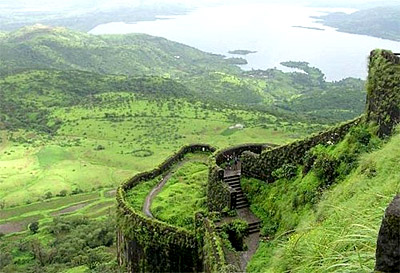 The national park is one of the last undisturbed tracts of href="https://www.indianetzone.com/south_western_ghats_moist_deciduous_forests_india" class="clsCrossLink" title="South Western Ghats Moist Deciduous Forests in India">South Western Ghats mountain rain forests and tropical moist evergreen forest in India. Contiguous with the proposed Karimpuzha National Park to the north and Mukurthi National Park to the north-east, it is the core of the Nilgiri Biosphere Reserve and is part of the Nilgiri Sub-Cluster, Western Ghats World Heritage Site, recognised by UNESCO in 2007.
The national park is one of the last undisturbed tracts of href="https://www.indianetzone.com/south_western_ghats_moist_deciduous_forests_india" class="clsCrossLink" title="South Western Ghats Moist Deciduous Forests in India">South Western Ghats mountain rain forests and tropical moist evergreen forest in India. Contiguous with the proposed Karimpuzha National Park to the north and Mukurthi National Park to the north-east, it is the core of the Nilgiri Biosphere Reserve and is part of the Nilgiri Sub-Cluster, Western Ghats World Heritage Site, recognised by UNESCO in 2007.
History of Silent Valley National Park
Silent Valley National Park has a past history. It is situated in Kerala, almost 150 kms away from the crowded, industrial town of Coimbatore. It is formed at a period which nearly dates back to hundred and fifty years earlier. However it was few years back only, that the park has got due attention. This wilderness in the late 1970s and early 1980s was regarded as a suitable location for building a `hydroelectric project`. However, due to the joint initiatives of various national as well as international forums, the park was being protected from this forthcoming destruction. Finally, in the year 1984, due to their sincere efforts, an area covering 90 sq km of land was acknowledged as national park.
Location of Silent Valley National Park
Silent Valley National Park is situated in the Kundali Hills of the Western Ghats, a plateau enveloped by high ridges and protective embankments, which ascends in the east to the Upper Nilgiri Plateau. Its altitude ranges from 650 m to more than 2,000 m. The narrow, perennial Kuntipuzha River flows through the park, thereby splitting it into a wide section in the east and a narrow segment in the west. Small rivers originate in the high, eastern frontiers of the Silent Valley National Park to coalesce with the Kuntipuzha.
 Geography of Silent Valley National Park
Geography of Silent Valley National Park
Silent Valley is rectangular, 12 km from north to south and 7km from east to west. It is separated from the eastern and northern high altitude plateaus of the Nilgiris Mountains by high continuous ridges including Sispara Peak (2,206 m) at the north end of the park. The park gradually slopes southward down to the Palakkad plains and to the west it is bounded by irregular ridges. The altitude varies from 658 m to 2328 m at Anginda Peak, but most of the park lies within the altitude range of 880 m to 1200 m. Soils are blackish and slightly acidic in evergreen forests where there is good accumulation of organic matter. The underlying rock in the area is granite with schists and gneiss, which give rise to the loamy laterite soils on slopes.
The Kunthipuzha River drains the entire 15 km length of the park from north to south into the Bharathapuzha River. Kunthipuzha River divides the park into a narrow eastern sector of width 2 kilometers and a wide western sector of 5 kilometers.
Climate of Silent Valley National Park
Silent Valley gets copious amounts of rainfall during the monsoons, but the actual amount varies within the region due to the varied topography. In general, rainfall is higher at higher altitudes and decreases from the west to the east due to the rain shadow effect. 80 percent of the rainfall occurs during the south-west monsoon between June and September. The park also receives a significant amount of rainfall during the north-east monsoon between October and November.
The park being completely enclosed within a ring of hills has its micro-climate and probably receives some convectional rainfall, in addition to rain from the two monsoons. In the remaining months, condensation on vegetation of mist shrouding the valley is estimated to yield 15 per cent of the total water generated in the rainforest. The mean annual temperature is 20.2 degree C. The hottest months are April and May when the mean temperature is 23 degree C and the coolest months are January and February when the mean temperature is 18 degree C. Because of the high rainfall, the relative humidity is consistently high (above 95%) between June and December.
Flora of Silent Valley National Park
The flora of the valley include about 1000 species of flowering plants, 108 species of orchids, 100 ferns and fern allies, 200 liverworts, 75 lichens and about 200 algae. A majority of these plants are endemic to the Western Ghats. Locally popular, as Sairandhrivanam, the Silent Valley National Park is one of the handfuls of the tracts of virgin tropical evergreen forests that are yet to be found in India subcontinent. One of the reasons behind referring it as `silent` is that the almost absolute absence of various clamoring insects and tiny creatures like cicadas, insects whose hue and cry can make even normal talk difficult to carry.
Angiosperm flora currently identified here includes 966 species belonging to 134 families and 599 genera. There are 701 Dicotyledons distributed among 113 families and 420 genera. There are 265 Monocotyledons here distributed among 21 families and 139 genera. Families best represented are the Orchids with 108 species including the rare, endemic and highly endangered orchids Ipsea malabarica, Bulbophyllum silentvalliensis and Eria tiagii, Grasses, Legumes, Rubiaceae and Asters.
There are many rare, endemic and economically valuable species, such as cardamom Ellettaria cardamomum, black pepper Piper nigrum, yams Dioscorea spp., beans Phaseolus sp., a pest-resistant strain of rice Oryza Pittambi, and 110 plant species of importance in Ayurvedic medicine.
Fauna of Silent Valley National Park
The flowing water and green forests is a beautiful treasure house of a variety of wild life habitat. A varied range of fish species are found to swim in the blue waters. Within the periphery of Silent Valley National Park, the Kerala Forest Research Institute is carrying on research based on the ecological studies, with a unique focus on the wild flora and birds like the Lion-tailed Macaque.
About 40 species of mammals are found, including nineteen amphibians, and numerous insects and tiny animals. Several endangered bat species are found here. Elephants, tigers, macaques, flying squirrels, hornbills, sunbirds and bird wings can be found in the premises of Silent Valley National Park. Other species include Asian Elephant, Nilgiri Tahr, Tiger, Wild Dog (Dhole), Nilgiri Marten, Rusty Spotted Cat, Small Indian Civet, Striped-necked Mongoose, Brown Mongoose, Lion-tailed Macaque, Slender Loris, Large Brown Flying Squirrel, Grizzled Giant Squirrel and Mouse deer etc.
Quite a few reptiles including the Malabar Pit Viper are seen basking on the muddy shores of the river valleys.
Nearly 150 kinds of birds throng the region, adding beauty to this park. Tweeting of Grey Jungle fowl, Painted Bush Quail, Red Spurfowl, Sri Lanka Frogmouth, Great-eared Nightjar, Great Hornbill, Malabar Pied Hornbill, White-bellied Woodpecker, Dollarbird, Malabar Trogon, Asian Fairy Bluebird. Blue-bearded Bee-eater, Grey-breasted Laughing thrush, Hill Myna, Mountain Imperial Pigeon, Nilgiri Wood Pigeon, Black-and-orange Flycatcher, Nilgiri Flycatcher, Malabar Whistling Thrush, Wynaad Laughingthrush, Little Spiderhunter are not rare. Hunting birds like Black Eagle, Crested Goshawk, Rufous-bellied Eagle, Jerdon`s Baza, Mountain Hawk Eagle, Crested Serpent Eagle, Besra, Brown Wood Owl too thrive in the Silent Valley National Park.
Visiting Information
Silent Valley National Park"s nearest railway station is Palghat Junction (Palakkad). From Palakkad, one has to reach Mannarkkad, and from there to Mukkali. Both places are well connected by private buses. People can hire a jeep to reach Mukkali which is about 60 km from Palakkad, via Mannarkkad en route. Another close railway station is Coimbatore Junction. From Coimbatore, the road reaches Anakatty(around 30 kms) and then Ankatty to Agali (15 kms) and finally Mukkali (20 kms).











